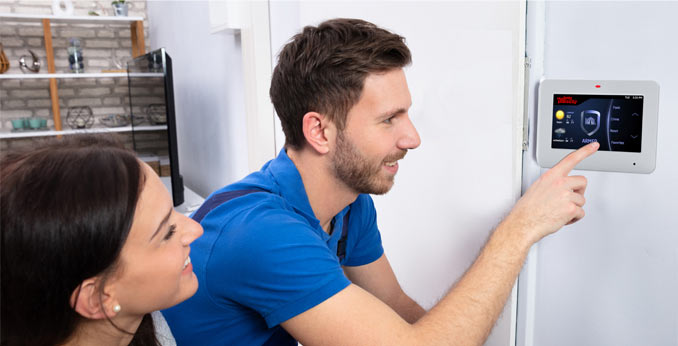The Testing Process of an Alarm Panel
The testing of an alarm panel is a critical procedure to ensure the safety and security of a property. An alarm panel, acting as the central hub of a security system, coordinates various sensors and devices. Regular testing validates its functionality and responsiveness to potential threats like intrusions or environmental dangers.
Importance of Testing
Testing an alarm panel is crucial for several reasons:
- Reliability: Ensures the system functions correctly in an actual emergency.
- Maintenance: Identifies potential issues or malfunctions before they lead to system failure.
- Compliance: Meets insurance requirements and adheres to safety regulations.
Preparing for the Test
- Notification: Inform the alarm monitoring service and local authorities to avoid false alarms.
- Documentation: Have the system’s manual and a checklist of all components at hand.
- Tools and Equipment: Ensure availability of necessary tools for physical inspections.
Step-by-Step Testing Process
1. Visual Inspection
- Physical Condition: Check for any visible signs of damage or tampering.
- Indicator Lights: Verify that all status lights are functioning as expected.
2. Battery Check
- Main and Backup Batteries: Test both the main power source and backup batteries.
- Voltage Levels: Contact Vigilante security to help use proper equipment to test your battery levels.
3. Sensor Testing
- Door and Window Sensors: Test each sensor by opening and closing entry points.
- Motion Detectors: Walk through monitored areas to trigger motion sensors.
- Smoke and CO Detectors: Contact Vigilante security to help test these systems with special test sprays.
4. Signal Transmission Test
- Communication with Monitoring Center: Contact your central station to run a test. Work with your central station to maintain proper responses.
- Connectivity Check: For wireless systems, test the strength and stability of the connection.
5. Control Panel Functions
- User Interface: Check all functions on the control panel, including arming, disarming, and setting up codes.
- Audible Alarms: Ensure the siren or alarm sound is loud and clear.
6. Additional Features
- Camera Systems: If integrated, test the recording and live feed capabilities.
- Home Automation Features: For smart systems, test the integration with lights, locks, and other connected devices.
Post-Testing Procedures
- Resetting the System: Ensure the system is back to its normal operational mode after testing.
- Reporting: Document the test results and report any issues to the alarm system provider or technician.
- Scheduling Regular Tests: Set up a routine schedule for future tests (monthly, quarterly, etc.).
Troubleshooting Common Issues
- False Alarms: Investigate and rectify causes of false alarms, such as faulty sensors or incorrect settings.
- Connectivity Issues: For wireless systems, troubleshoot any signal interference or connectivity problems.
- Battery Replacement: Replace batteries if they fail the test or show low voltage.
Professional Assistance
- When to Call a Professional: If issues are detected that cannot be resolved through basic troubleshooting.
- Regular Maintenance: Consider having a professional service for annual or bi-annual comprehensive checks.
Technological Advances and Updates
- Software Updates: For systems with digital interfaces, check for and install software updates.
- Staying Informed on New Features: Keep abreast of new technologies and features that can enhance the security system.
Legal and Compliance Considerations
- Adhering to Standards: Ensure the testing and maintenance of the alarm panel comply with local safety and security standards.
- Recording and Documentation: Maintain records of all tests for compliance purposes and potential insurance claims.
Conclusion
The testing process of an alarm panel is an integral part of maintaining a secure and reliable security system. Regular and thorough testing not only ensures the functionality of the alarm panel but also reinforces the overall safety and peace of mind for property owners. By adhering to a structured testing process, addressing any identified issues promptly, and staying updated with technological advancements, individuals and businesses can significantly enhance the efficacy of their security systems.

